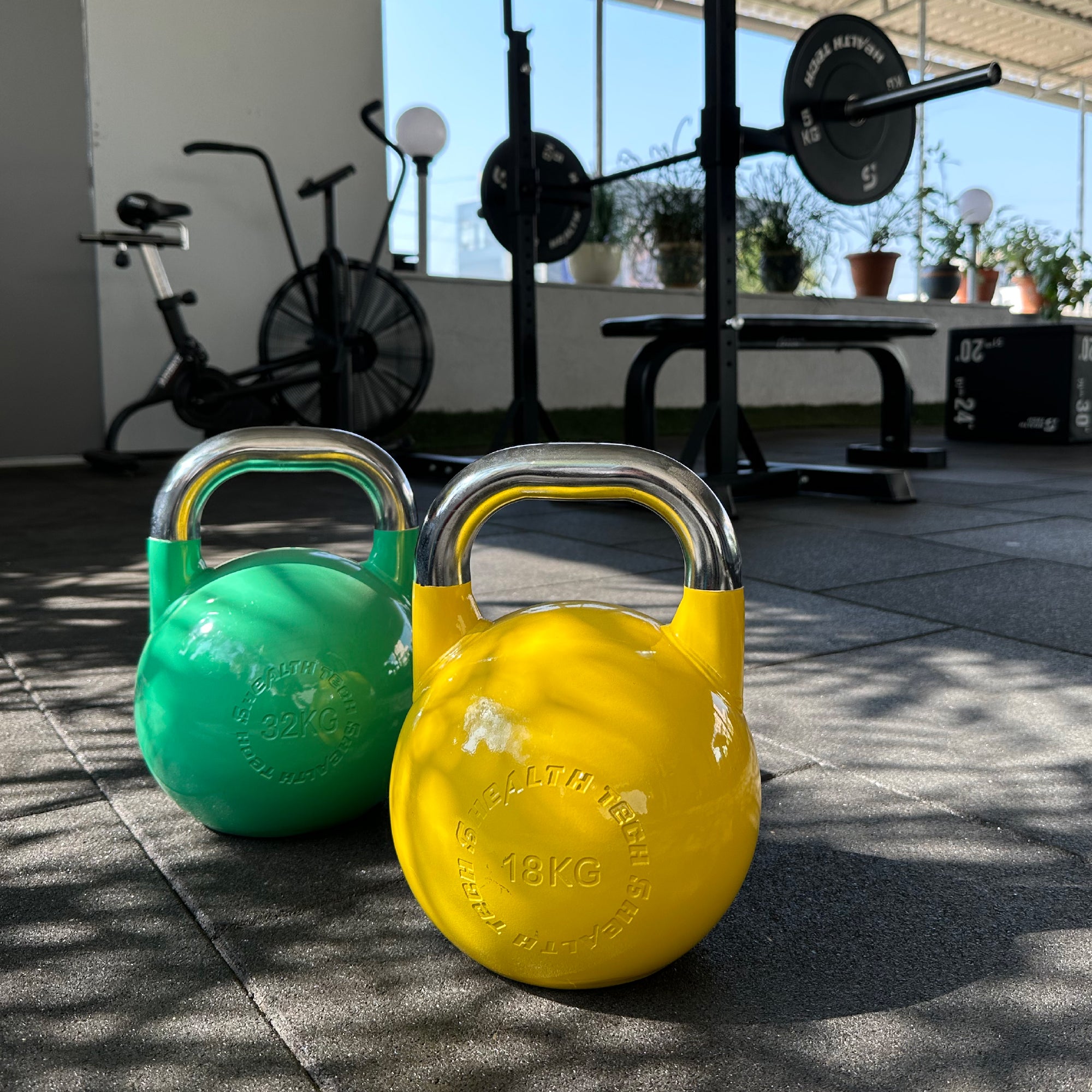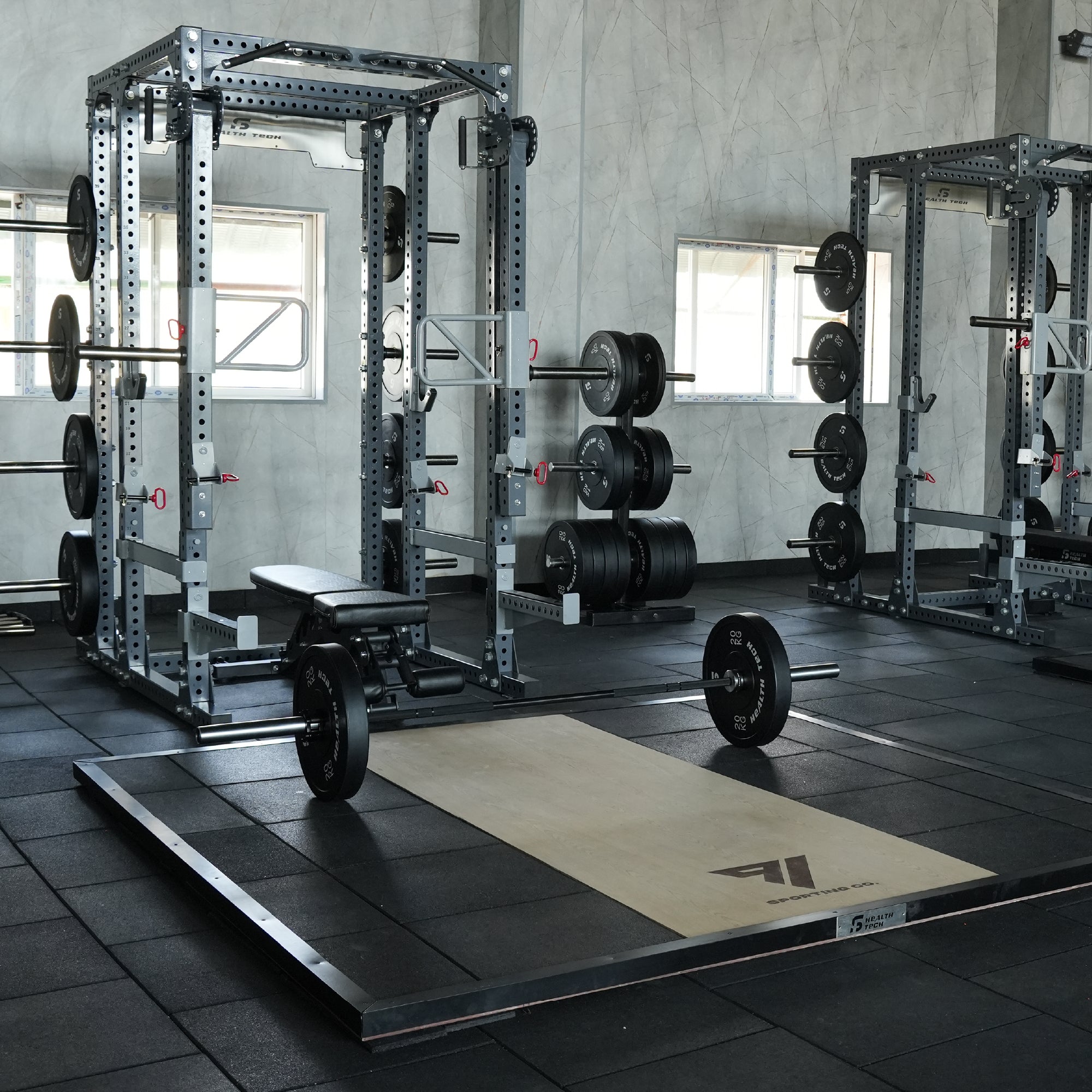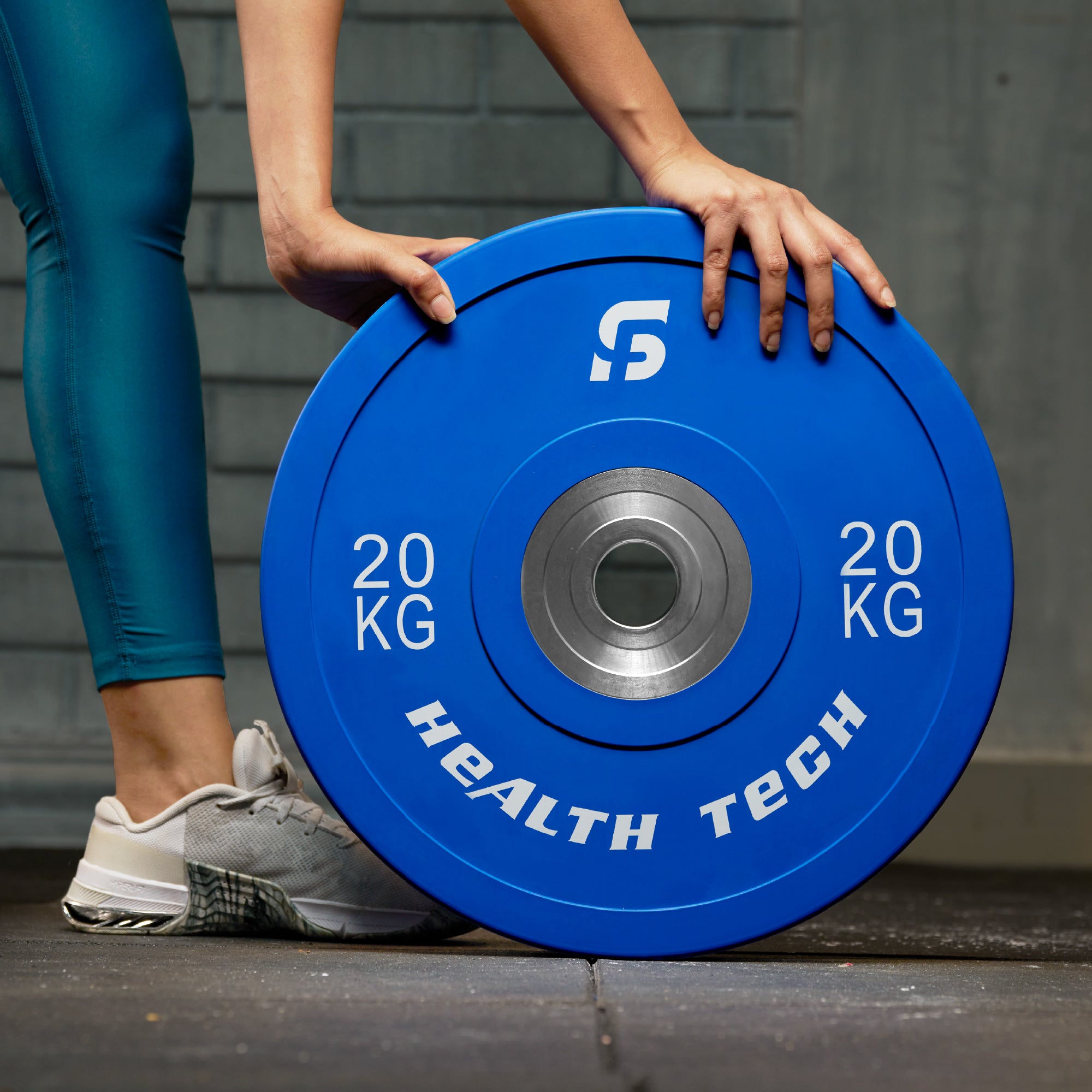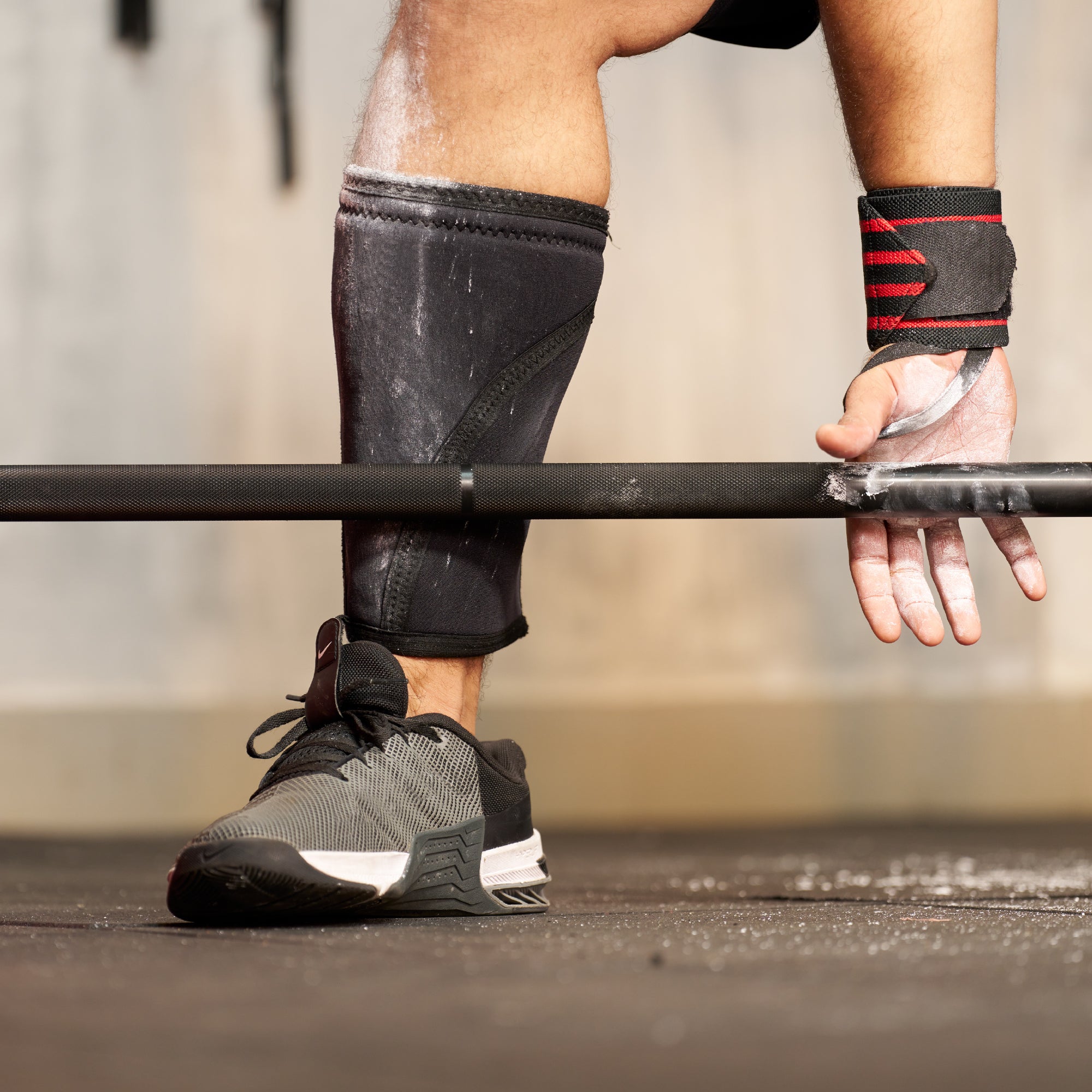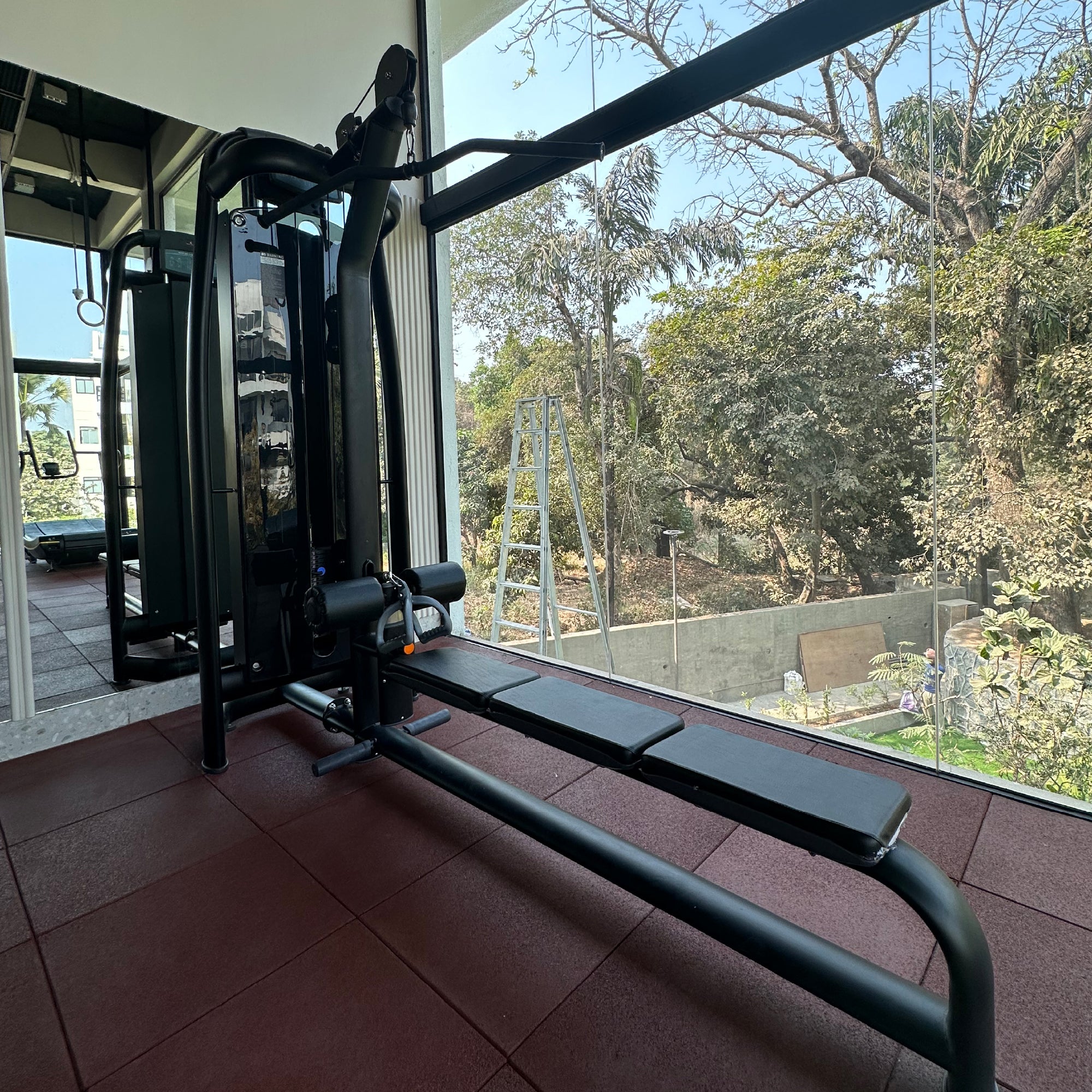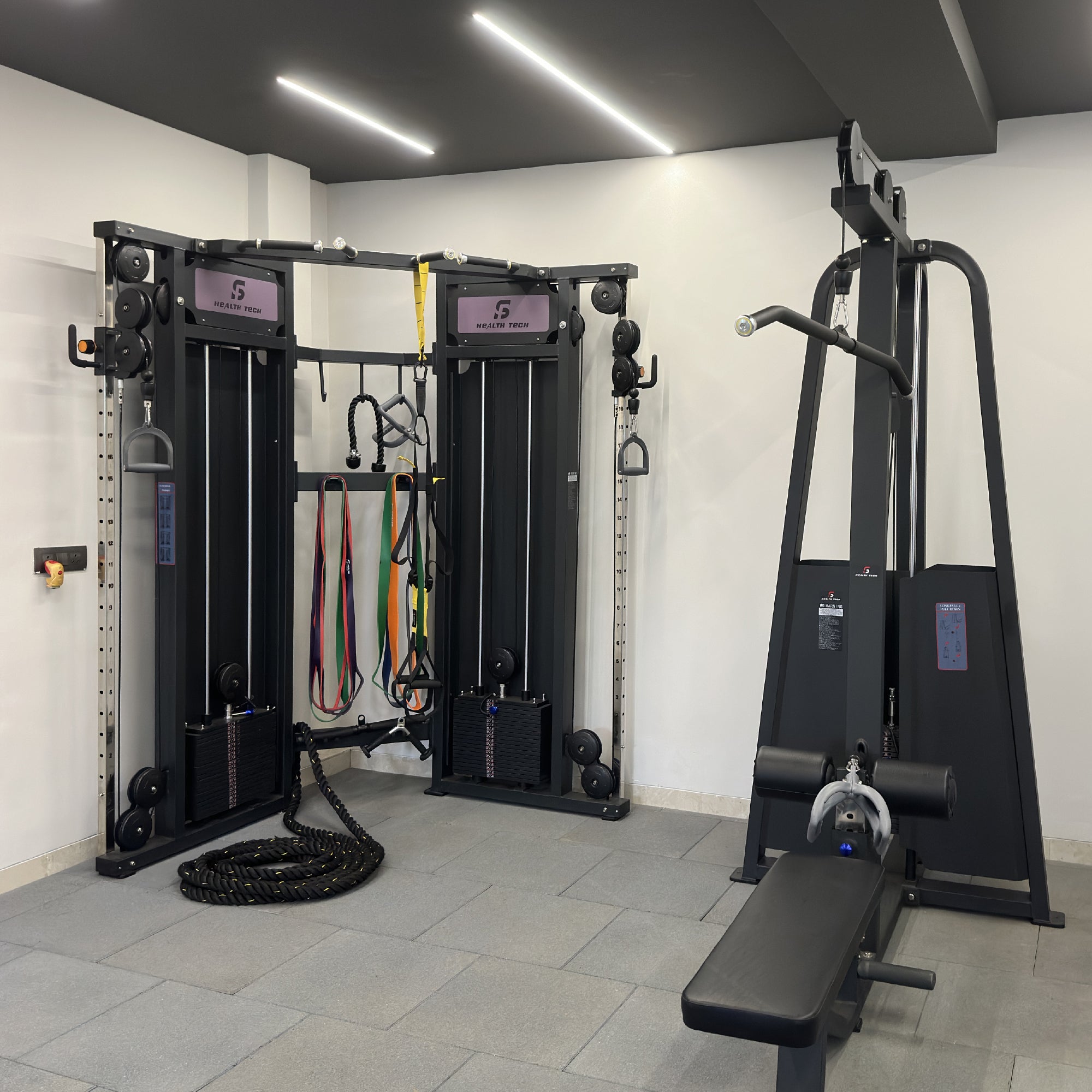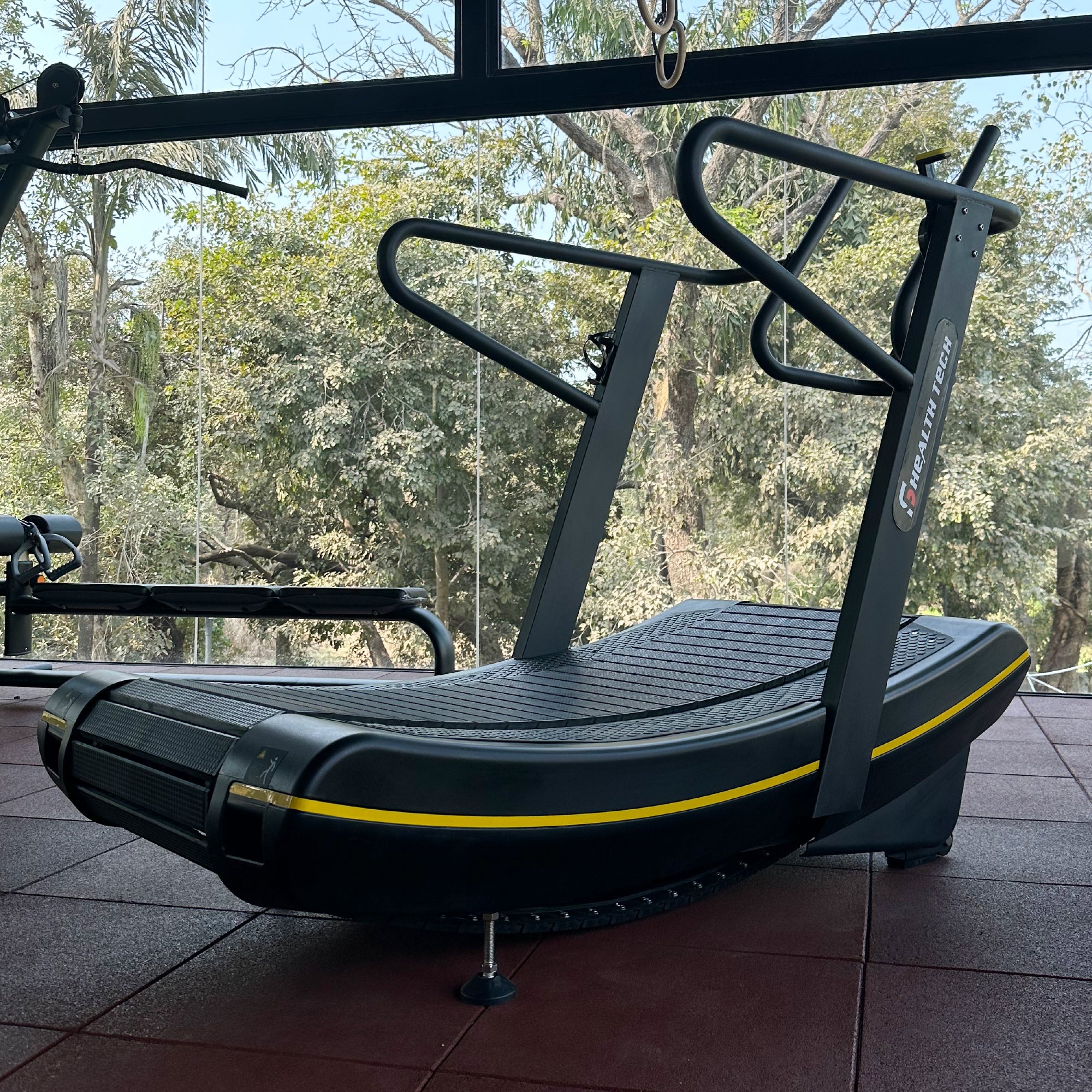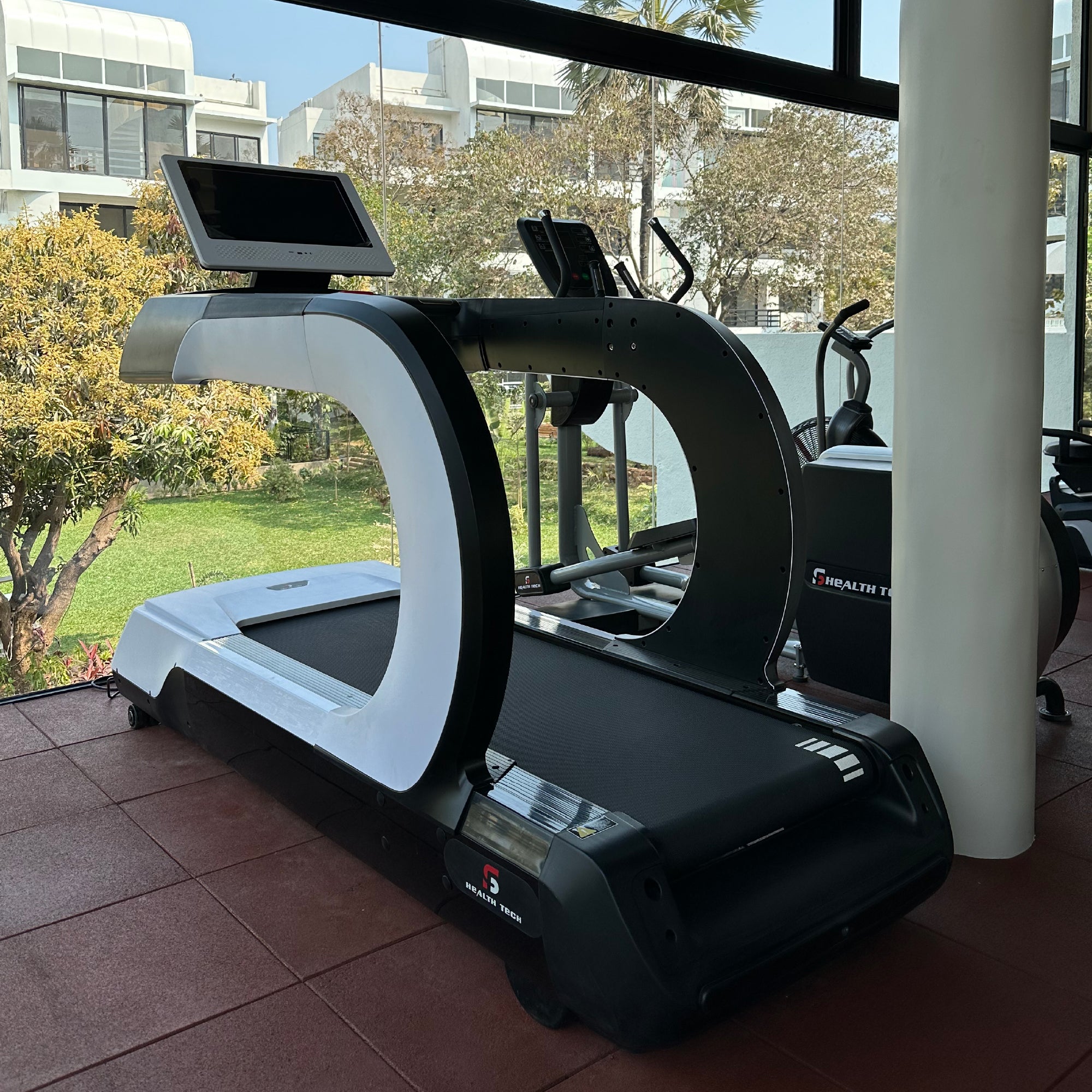Best Dumbbell Exercises for Back to Build Strength and Muscle
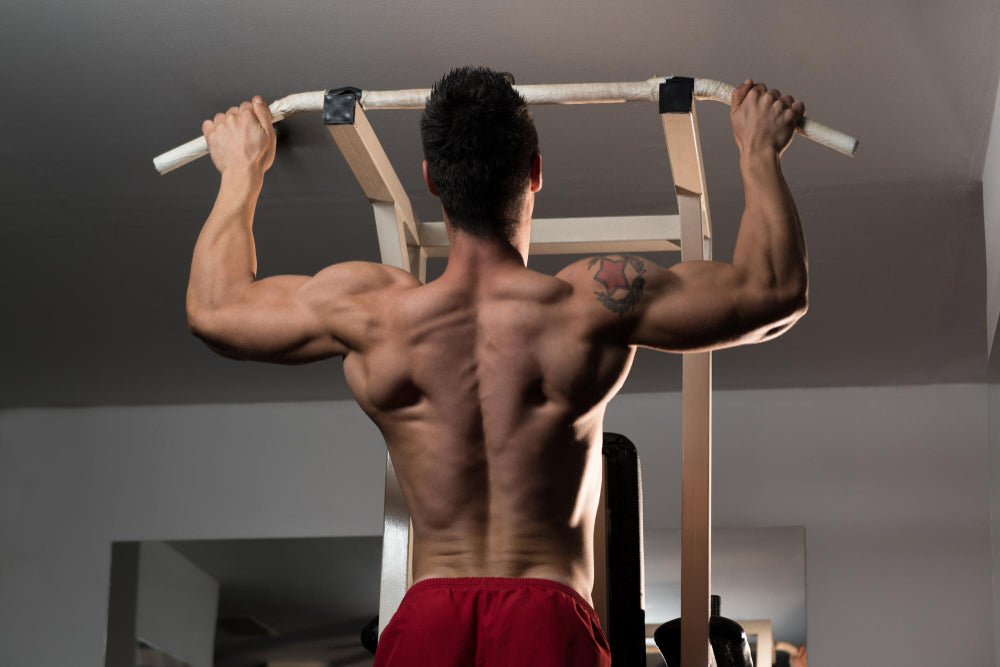
Building a strong back is vital for overall fitness and well-being. The back muscles support posture, stabilize the spine, and aid in daily movements like lifting groceries or playing sports. Whether at home or in the gym, having a variety of dumbbells is crucial for effective back workouts. Before starting, warm up with some push-ups and dynamic stretches to prepare your muscles and joints. In this guide, we'll explore the importance of back exercises, the key muscles involved, and top dumbbell workouts to strengthen and sculpt your back effectively.
Benefits of Back Workout
Ever noticed, how a strong back not only improves your posture but also makes you feel more confident? When you start incorporating back workouts, you'll quickly see improvements in daily comfort and posture. It's not just about achieving that desirable V-taper look but also about feeling stronger and more balanced. Here are some key benefits of using dumbbells for your back:
- Strengthening the back muscles through workouts helps correct posture imbalances and promotes a more upright stance.
- Building a strong back provides stability for the spine and supports proper alignment during movements.
- Regular back workouts with dumbbells boost overall strength, making daily tasks easier and reducing the risk of injury.
- Targeting the back muscles with various exercises helps create a toned and defined appearance, contributing to a balanced physique.
- Strong back muscles improve functional movements like lifting, pulling, and reaching, enhancing overall physical performance and agility.
- A well-developed back provides support to the spine and reduces the likelihood of strains or injuries during physical activities.
Key Muscles in Your Back
The back muscles are crucial for posture, pulling, and lifting. They're trained from different angles for optimal development. A robust back enhances strength, shapes a V-tapered physique, and promotes better posture. Back workouts typically target muscles including:
- Trapezius (Traps): Extending from the spine to the upper back and shoulders, shrug movements target the upper traps, while middle and lower traps are worked indirectly during various back exercises.
- Rhomboids and Scapular Stabilizers: Situated around the shoulder blades, they stabilize shoulder movements. Typically indirectly trained through back exercises, they may require isolation with movements like Y raises.
- Erectors (Lower Back): Running vertically along the lower back, aiding trunk extension and stability. Exercises like bent-over rows and deadlifts engage the lower back.
- Serratus: Beneath the armpit at a diagonal, stabilizing shoulder blades and aiding in pressing and pulling movements. Exercises like straight arm pulldowns or pullovers target it.
- Latissimus Dorsi (Lats): Spanning from hips to shoulders, forming a V-shape. Effective targeting requires both horizontal (rows) and vertical (pull-ups, lat pulldowns) pulling movements. While dumbbells are limited for vertical pulls, mastering pull-ups is essential for balanced back development.
Best Dumbbell Exercises for Back
Dumbbell Bent Over Row:
The dumbbell bent-over row strengthens your back muscles by mimicking a rowing motion. You hinge at the hips and pull weights towards your sides, keeping your back flat and core engaged. This exercise builds upper and lower back strength.
-
How to Do It:
- Stand with feet hip-width apart, holding dumbbells at sides.
- Hinge forward at hips, keeping core engaged and knees bent while maintaining a straight back and avoiding rounding shoulders.
- Pull weights toward the chest, elbows close to the body, and squeeze shoulder blades at the top.
- Lower weights slowly.
-
Benefits:
- Targets lats, rhomboids, biceps, and core stabilizers.
- Improves posture and upper body strength.
- Enhances pulling power for activities like lifting and pulling movements.
Dumbbell Inclined Chest-Supported Row:
The dumbbell inclined chest-supported row is a back exercise that targets your lats and upper back muscles. This variation helps isolate your back muscles by taking stress off your lower back and core.
-
How to Do It:
- Lean your chest on an incline bench at a 45-degree angle.
- Pull dumbbells toward the body.
- Use a neutral grip for shoulder comfort.
- Adjust grip variations for emphasis.
-
Benefits:
- Targets latissimus dorsi, rhomboids, trapezius, and rear deltoids.
- Reduces strain on lower back.
- Enhances upper back and shoulder stability.
Dumbbell Seal Row:
The Dumbbell Seal Row targets your back muscles by mimicking a rowing motion. This exercise offers a greater range of motion compared to a regular dumbbell row.
-
How to Do It:
- Lie face down on a flat bench, arms fully extended.
- Pull dumbbells to the sides without lifting the chest off the bench.
- Lower weights slowly.
-
Benefits:
- Provides a full back workout without straining the lower back.
- Isolates back muscles effectively.
- Improves scapular retraction and posture.
Single-Arm Row in Plank:
The Single-Arm Plank Row is a challenging exercise that strengthens your core and upper back. It primarily targets your back muscles, including the lats and traps, along with your shoulders and triceps for a sculpted upper body.
-
How to Do It:
- Stand facing a bench, holding one dumbbell in your left hand.
- Lower body towards the bench, placing right palm flat on it.
- Extend legs behind, toes planted, and brace core.
- Pull weight towards the left chest, keeping elbow close.
- Complete reps on one side, then switch.
-
Benefits:
- Engages stabilizing core muscles intensely.
- Improves balance and coordination.
- Enhances unilateral strength and muscle balance.
Underhand Row:
The underhand row is a back exercise that primarily targets your lower lats, biceps, and lower traps. It emphasizes pulling your elbows in close to your body, maximizing engagement in these muscle groups.
-
How to Do It:
- Stand with feet hip-width apart, holding dumbbells with palms facing up.
- Hinge forward at hips, keeping core engaged and avoiding rounded shoulders.
- Pull weights towards the chest, elbows close to the body.
- Lower weights slowly.
-
Benefits:
- Targets lats and biceps with an underhand grip.
- Strengthens grip and forearm muscles.
- Enhances bicep development and definition.
Renegade Row:
Renegade rows are a challenging exercise that target your upper back muscles, especially your lats, rhomboids, and traps. They also engage your core for stability, making them a great compound exercise.
-
How to Do It:
- Start in a high plank position with dumbbells on the floor.
- Perform a pushup, then row one dumbbell up to the chest while stabilizing the core.
- Alternate rows with each arm after every pushup repetition.
-
Benefits:
- Engages multiple muscle groups, including chest, back, shoulders, and core.
- Improves overall upper body strength and stability.
- Enhances coordination and proprioception.
Dumbbell Pullover:
The dumbbell pullover is a versatile exercise that targets your upper back and chest. By tweaking your arm position, you can focus more on your lats (back) with elbows flared out, or your chest with elbows tucked in. It also engages your core for stability.
-
How to Do It:
- Lie on a bench with shoulders positioned correctly.
- Raise the dumbbell directly overhead, maintaining stability with abs and glutes.
- Lower weight slowly, keeping elbows straight.
- Pull the weight back up to the starting position.
-
Benefits:
- Targets the chest, back, and triceps.
- Stretches and strengthens the chest and lats.
- Improves shoulder mobility and stability.
Dumbbell Deadlift:
The dumbbell deadlift is a compound exercise that strengthens your posterior chain, including your hamstrings, glutes, and lower back. It also engages your core and improves grip strength.
-
How to Do It:
- Stand and grasp dumbbells in each hand.
- Flex knees and hips to lower dumbbells straight down.
- Return to the starting position after a brief pause.
- Breathe in while lowering and exhale as you return to the starting position.
-
Benefits:
- Targets lower body muscles, including hamstrings, glutes, and lower back.
- Improves hip hinge mechanics and posterior chain strength.
- Enhances overall functional strength and athleticism.
Training your back with dumbbells is a versatile and effective way to build strength, and muscle, and improve overall fitness. Key benefits include muscle balance, grip strength, and a boosted metabolism. Success comes from consistency, proper form, and gradually increasing weight. By performing these exercises correctly, you can stimulate muscle growth, enhancing strength and size. Adjust weights or grips to suit your fitness level, and monitor your progress consistently. With dedication, you'll build a stronger, healthier back and boost your overall fitness journey.
Ready to transform your back? Pick up those dumbbells and start your workout today!
FAQs
-
How do I work out my back with dumbbells?
To work out your back with dumbbells, focus on exercises like dumbbell rows, deadlifts, reverse flies and pullovers. These exercises target different muscles in your back and can be easily done with dumbbells.
-
Can you build back muscle with just dumbbells?
You can effectively build back muscle using just dumbbells with exercises like rows, deadlifts, pullovers, and reverse flies. Dumbbell rows target the lats and middle back, while deadlifts engage multiple muscles including those along your spine. Pullovers work the upper back, chest, and triceps, and reverse flies target the rear deltoids and upper back. By performing these exercises with proper form and intensity, you can stimulate muscle growth in your back, enhancing strength and size.
-
Do pushups work back?
Pushups engage some back muscles indirectly, but they primarily work the chest, shoulders, and triceps, not focusing on the back. For targeting the back muscles, exercises like rows, deadlifts, and pull-ups are more effective.
-
How Do I Build My Back With Dumbbells?
Training your back with dumbbells is similar to using machines or barbells. However, for targeting the lats vertically, pull-ups or pull-downs are necessary, alongside dumbbell rows which emphasize horizontal pulling movements like the rhomboids and middle traps.
-
How Do I Train My Middle Back with Dumbbells?
For middle back training with dumbbell rows, pull the dumbbells towards your lower chest/upper abdomen while maintaining a parallel back to the floor. Incorporating flexion rows targets all back areas, providing a complete range of motion. This exercise particularly benefits the lower and mid-back muscles.


